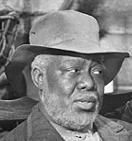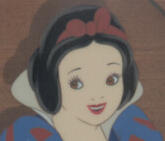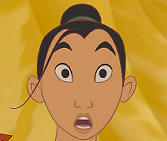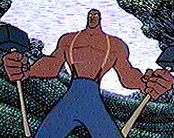Disney in the Classroom
Page 3 of 3




Uncle Remus, Snow White, John Henry and Mulan
All Images (c) Disney
To remind students what things were like before the Movement we view an
additional clip from Song of the South and a clip from Snow White.
We then view clips from John Henry and Mulan. It surprises
students that the two films about black men were set in the same time period
(Reconstruction) as were the two films about young women. (The Middle Ages) I
then ask my students to speculate (and to write down their speculations) on
why the Civil Rights Movement caused the portrayal of black men and women to
change so much. We then
discuss what they have discovered. This usually means that they end up
criticizing Snow White and Uncle Remus. They say things like Snow White got
into trouble because she was "clueless" or that Uncle Remus was not taken
seriously because he was weak. I remind my students that these characters
were positive portrayals (for the time) of a black man and a young woman doing
the best they could despite the restrictions society placed on them.
Students' comments on John Henry and Mulan are always much more positive.
They are generally described as "strong" and "smart" respectively. It is
usually about this time that at least one student realizes that these modern
characters are written as they are because it is now acceptable to portray
African Americans and women in this way. This is generally when the light
comes on for the rest
of the class.

Now
it's O.K. to be pretty and smart
(c) Disney
What students realize is that Disney films have always reflected what is
acceptable to the majority of the people in our society. This is a rule for
Disney films because they are made for families. If a Disney's film doesn't
reflect what the majority of parents want their children to see, the film will
fail. In the 1930's and 1940's
this meant that Disney films reflected the fact that racism and sexism were
part of our culture. This doesn't mean that Walt Disney or those who worked
for him were consciously encouraging racism or sexism. They were simply
reflecting what the American public found acceptable. Today Disney films
still reflect what is acceptable in our society, but what is acceptable is
different. A black man can be a strong leader or a young woman can be the
hero. Thankfully our country has changed and my students have only known a
world where every avenue is open to them, regardless of their color or
gender. We always hear about the "good old days" and how things were better
in the past. This may be true concerning some aspects of our society. However,
if
you are a person of color or a woman is there really another time you'd choose
to be alive? We should not be too quick to judge the society that is
reflected in the Disney films of the past. Instead we should be grateful that
these films preserve what was good about our past, and that they help us to
understand why some things needed to change. We should also be grateful that
the Disney films of today reflect that many of the things that needed to
change did, and that the United States is now the most fair and the most just
society the world has ever known.
Discuss It
Related Links
-- Lee "MouseBear" Suggs
Lee Suggs is a history teacher in Northern California.
The opinions expressed by Lee Suggs, and all of our columnists, do not necessarily represent the feelings of LaughingPlace.com or any of its employees or advertisers. All speculation and rumors about the future of Disneyland and the Walt Disney Company are just that - speculation and rumors - and should be treated as such.
-- Posted January 7, 2003
